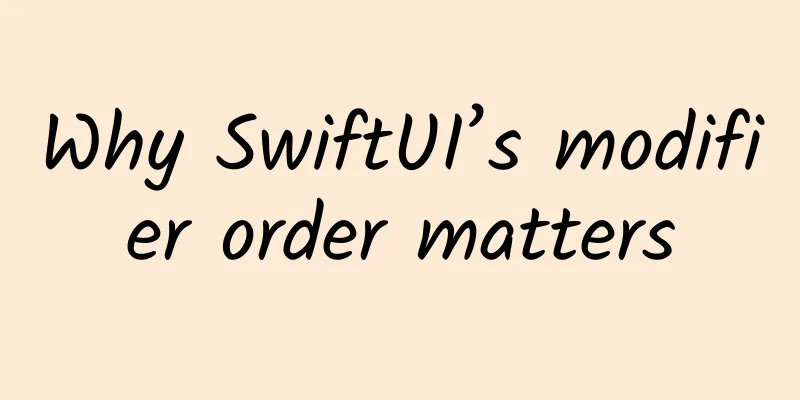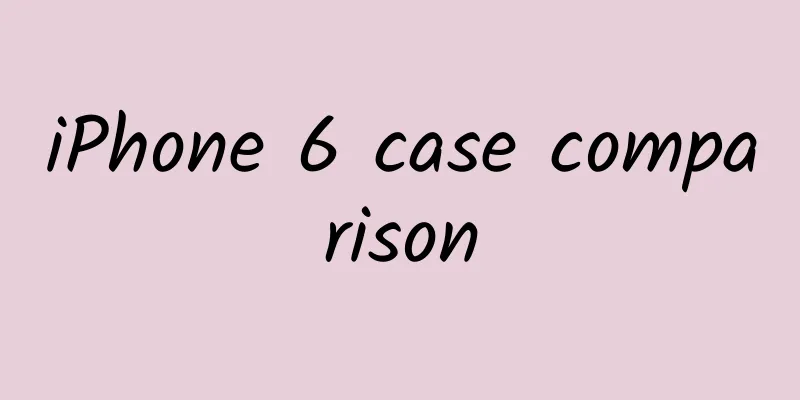Why SwiftUI’s modifier order matters

|
This article is reprinted from the WeChat public account "Swift Community", written by Wei Xian Zhy. Please contact the Swift Community public account to reprint this article. Whenever we apply a modifier to a SwiftUI view, we’re actually creating a new view with the changes applied — we’re not just modifying the existing view. If you think about it, this behavior makes sense — our views only retain the exact properties we give them, so if we set a background color or font size, there’s nowhere to store that data. We'll look at why this happens in the next chapter, but first, I want to look at what this behavior actually means. Take a look at this code:
What do you think it will look like when it runs? You've probably guessed wrong: you don't see a 200x200 red button with "Hello World" in the middle. Instead, you see a 200x200 empty square with "Hello World" in the middle and a red rectangle around "Hello World". If you think about how modifiers work, you can see why this is the case: instead of setting properties on the view, each modifier creates a new struct with that modifier applied to it. You can peek under the hood of SwiftUI by querying the type of the view body. Modify the button to look like this:
Swift’s type(of:) method prints the exact type of a particular value, in this case it prints the following: ModifiedContent You can see two things here:
To understand what the type is, start with the innermost type and work your way out:
As you can see, we use a stack of ModifiedContent types - each view requires a view to transform and the actual changes to make, rather than modifying the view directly. This means that the order of the modifiers is important. If we rewrite the code so that the background color is used after setting the Frame, then you get the expected result:
Now the best way to think about it is, imagine that SwiftUI renders your view after every modifier. So any time you say .background(Color.red) it will change the background color to red regardless of what Frame you gave it. If you then expand the Frame afterwards it won't reload because the background has already been used. Of course, this isn’t how SwiftUI actually works, because if it did it would be a performance nightmare, but it’s a neat mental shortcut you can use while learning. An important side effect of using modifiers is that we can apply the same effect multiple times: each modifier simply adds to the previous content. For example, SwiftUI provides us with the padding() modifier, which adds some space around a view so that it isn’t pushed against other views or the edge of the screen. If we apply padding, then a background color, then more padding and a different background color, we can give a view multiple borders, like this:
Translated from Why modifier order matters[1] References [1]Why modifier order matters: https://www.hackingwithswift.com/books/ios-swiftui/why-modifier-order-matters |
<<: 16 Must-Have Figma Plugins for UI/UX Designers
Recommend
Lying down or standing up? There are many ways to transport a rocket
Not long ago, a video of the Long March 7 rocket ...
How much does it cost to attract investment in the Bengbu Tea Mini Program? What is the investment price of Bengbu Tea Mini Program?
The overall investment promotion of Bengbu Tea Mi...
If you are positive for COVID-19 and do a CT scan, will the radiation be high? What should you pay attention to?
CT scan is an important means to determine the se...
Teacher Qi's "Physical Store Douyin Account Traffic Growth Operation Course" systematically learns the methodology of Douyin account operation
Training course video lecture content introductio...
Tmall responds to the fake number of reservations for Hammer smartphones: It was done by programmers
On October 12, Tmall, one of the online sales cha...
What can you do to save your contract phone that may be phased out?
For users who are used to buying bare-metal phone...
Year-end review: Interpretation of the top ten domestic technology news in 2021
The year of 2021, with its climaxes one after ano...
When it comes to the critical moment, your stomach will "revolt", be careful...
Have you ever had this experience in your life - ...
How much does it cost to customize the Yashan catering mini program? What is the price quote for the customized Shuangyashan catering mini program?
The launch of mini programs has brought convenien...
How effective are Estee Lauder skincare products?
The editor’s skin care products are mainly Estee ...
BYD's sales of new energy vehicles exceeded 220,000 in the first half of the year, a year-on-year increase of 106%
On July 9, BYD Auto announced its overall sales f...
iOS 18 is about to be released, get to know the new features first
The May Day holiday is approaching, which means i...
How to plan KOL marketing?
Currently, KOL marketing has become one of the ma...
Some pretend to be shit, some pretend to be dead, you frogs are really cunning! | Nature Trumpet
Welcome to the 45th issue of the Nature Trumpet c...









